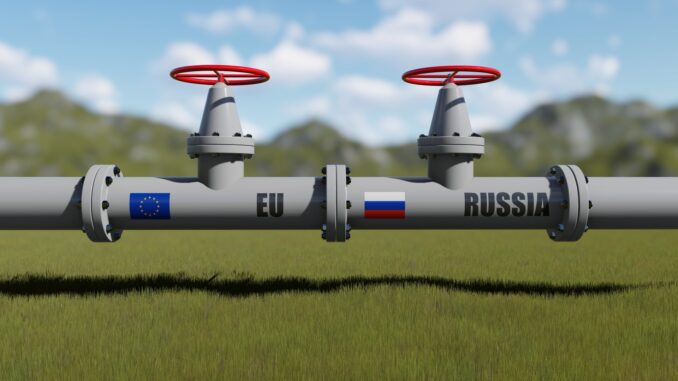
Gazprom’s recently announced unplanned three-day shutdown of the Nord Stream gas pipeline next week sent European natural gas prices to new highs as supply concerns returned in full. The new Russian gas curtailment to Germany once more showcases Moscow’s tactics to increase political pressure on Europe amid the extended war in Ukraine and the West’s sanctions on Russia. Questions now arise on whether Europe can survive the winter without Russian gas and whether it should anticipate such moves in the future.
The Nord Stream shutdown, announced late on Aug. 19, is scheduled for Aug. 31 to Sep. 2. The announcement sent the front-month September futures contract on the Dutch TTF, Europe’s de facto benchmark hub, to an intraday high of €295 per megawatt hour (around $86.10 per million Btu) on Aug. 22. The contract settled at around €277/MWh by the end of the session.
There is no need to panic about potential gas shortages this winter if households and industry stick to a plan to cut gas consumption by 15%-20%, Economy Minister Robert Habeck said on Aug. 21. Germany, which until recently relied on Russian gas for over half of its gas imports, expects to replace Russian flows with additional piped gas from Norway and the Netherlands, and LNG from new import terminals planned to be operational by the end of the year. Even if Gazprom completely halts gas supplies, there would be no situation where no gas reaches Germany, Habeck said.
Traders worry, however, that companies will not be able to trade at these price levels. “I think a bigger issue is the massive demand-side destruction coming in October as I haven’t seen many people hedge at these levels,” a Central European trader said. “And end-users aren’t agreeing to prices.”
Germany is not planning to extend the life of its three remaining nuclear power plants, planned to be shut by the end of the year, as they would only save about 2% of gas use, Habeck said. He is open to potentially extending the operation of the 1.4 gigawatt Isar-2 nuclear plant in Bavaria, depending on the results of a stress test of the country’s power grid.
Habeck also shot down the possibility of using Gazprom’s 55 billion cubic meter per year Nord Stream 2 pipeline, after German politicians called for its use to compensate for reduced Nord Stream flows. Berlin froze the certification process required for the start of Nord Stream 2 in February during the buildup before the start of Russia’s invasion of Ukraine. Habeck said that using the pipe would mean a win for Russian President Vladimir Putin.
Turbine Deadlock
Gazprom attributed the planned shutdown to the need to repair Nord Stream’s only operational gas compressor unit at Portovaya. A repaired Siemens gas turbine used at Nord Stream’s Portovaya compressor station is currently sitting in Germany since July. This was the attributed cause by Gazprom for gas flows through Nord Stream being limited to 20% of the pipe’s capacity, or around 33 million cubic meters per day, since late July. Moscow claims it needs guarantees that sanctions imposed by the EU, UK and Canada will not hinder operations in the future. Berlin says the turbine is ready to be sent.
In accordance with Siemens’ technical documentation, maintenance is required after every 1,000 hours of operations to make sure all equipment and systems work properly. This suggests that with only one compressor unit in operation, such shutdowns might repeat every 42 days. Siemens Energy specialists will take part in maintenance work, Gazprom said. After the maintenance, and provided that no major problems are encountered, Nord Stream flows will be resumed at 33 MMcm/d, Gazprom said.



